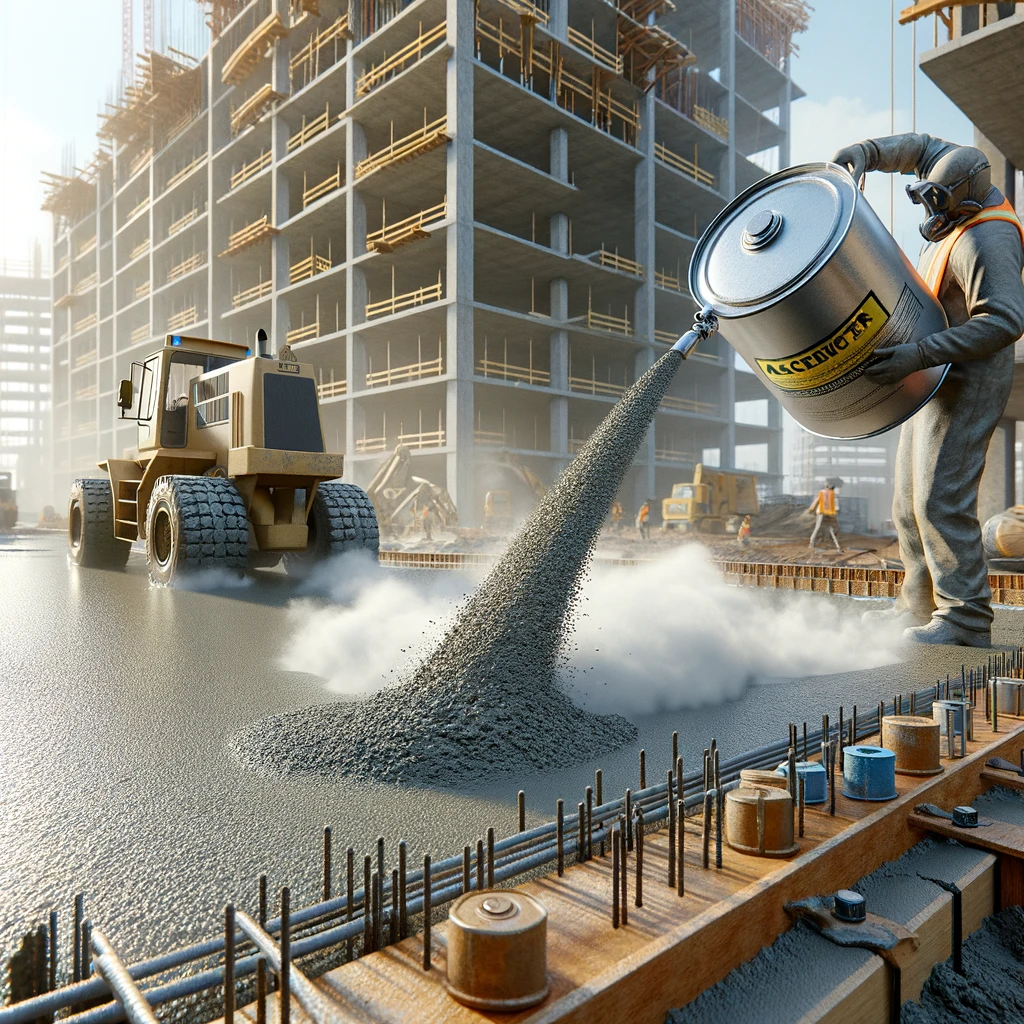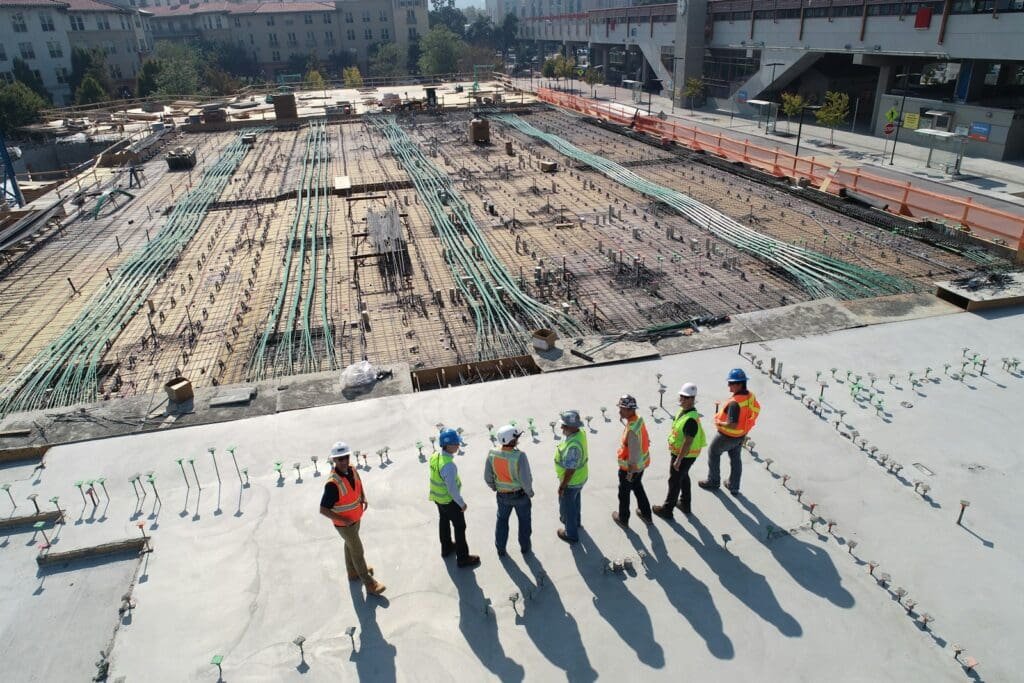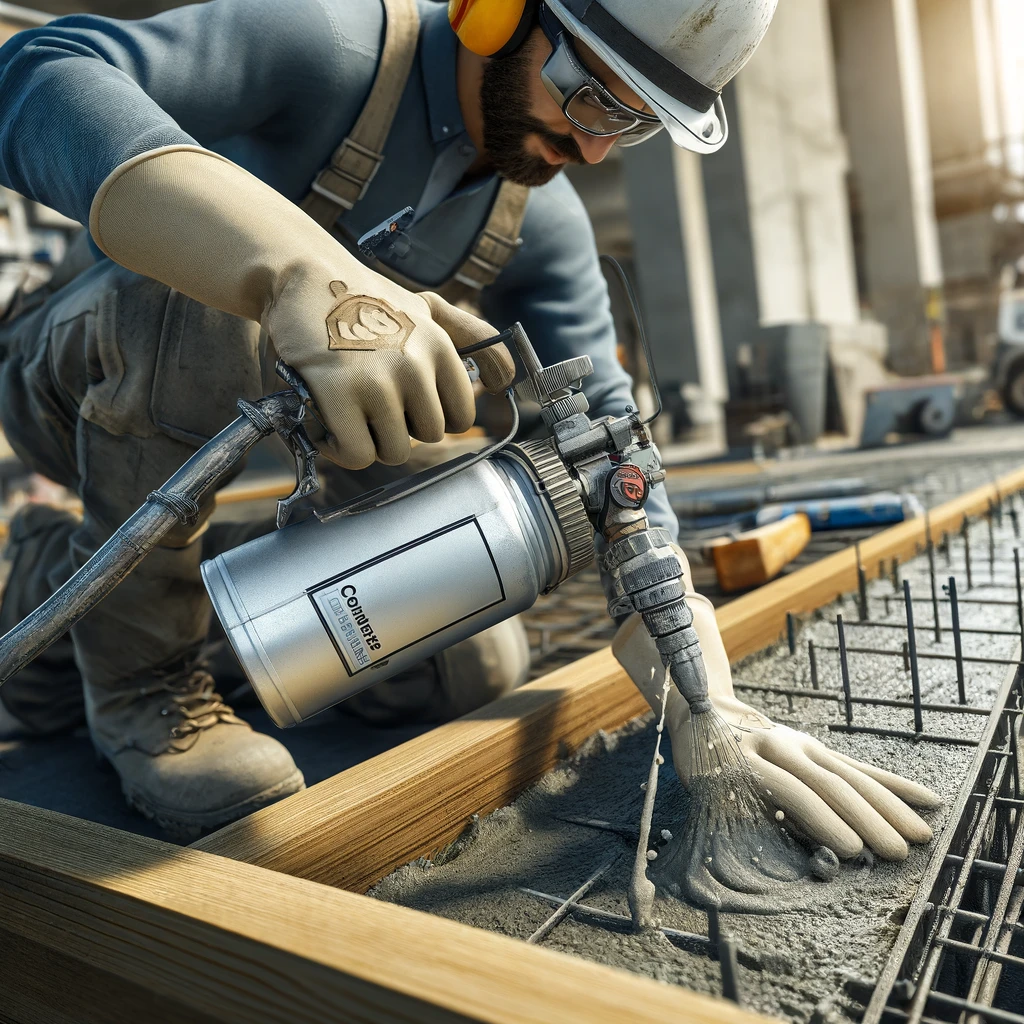Concrete Accelerator: A Key Construction Component
In the construction world, a ‘Concrete Accelerator’ stands out as a crucial element. It refers to a compound or substance that hastens the setting time of cement.
This compound reduces the time needed for concrete to harden, making construction quicker and more efficient.
Its utilization means crucial deadlines can be met without compromising on the structural strength of the finished project.
Let’s accelerate our knowledge and learn how it works.
No time to read? Click the video below to watch a summary instead:
Table of Contents
Alternatives to Using Concrete Accelerator in Construction Work

In the construction industry, a concrete accelerator is primarily used to speed up the curing process of concrete, thereby reducing the time from the initial setting to the final hardening.
While accelerators offer numerous benefits such as faster project completion and the ability to pour concrete in colder temperatures, they sometimes can lead to unwanted side effects like decreased concrete longevity.
This has led to the exploration and implementation of alternatives.
Understanding Traditional Concrete Accelerators
Before looking into alternatives, it’s important to comprehend what traditional concrete accelerators are and why they are used.
| Concrete Accelerator | Function |
|---|---|
| Calcium chloride | Most common accelerator. It speeds up hydration, which is the chemical process causing the concrete mix to harden. |
| Non-chloride accelerators (NCA) | Offer the benefits of the calcium chloride but reduce the potential of steel bar corrosion in concrete. |
While these accelerators are crucial to many projects, the search for alternatives stems from their potential disadvantages like decreased durability, discoloration, and reduced resistance to freeze-thaw cycles.
Alternative Solutions
Several viable alternatives to concrete accelerators exist which include warming the concrete, pozzolanic materials, or altering the concrete mix design.
1. Warming the Concrete
One method used to speed up concrete curing without using an accelerator is to warm the concrete. This strategy is often employed when setting concrete in colder temperatures as it reduces the time the concrete requires to harden.
- Use heated water in the concrete mix
- Use concrete curing blankets to trap heat
- Use a heated enclosure to increase the ambient temperature
2. Pozzolanic Materials
Pozzolanic materials, such as fly ash or silica fume, can be added to the concrete mix. These materials react with calcium hydroxide to form additional cementitious compounds, which can speed up curing in certain circumstances, improving the longevity and strength of the concrete.
3. Altering the Concrete Mix Design
Modifying the concrete mix can also provide a faster setting time. This can include increasing the cement content or using a rapid-hardening cement. Both of these approaches can increase the speed at which the concrete hardens.
While concrete accelerators are vital for many construction projects, alternatives do exist and can be used in the right circumstances.
Recognizing the most suitable option for a given project can have substantial impacts on both construction timeline and the quality of the final product. Always be sure to consult with a knowledgeable concrete expert or contractor before making such decisions.
Cost of Using a Concrete Accelerator in Construction

The utilization of concrete accelerators in the construction process is key to enhancing the strength gain and the setting of concrete during colder temperatures.
However, the use of these accelerators comes at an additional cost which varies depending on different factors. Therefore, it’s pivotal to understand these costs before making a decision.
Factors Influencing the Cost of Concrete Accelerator
Several components influence the cost of concrete accelerators. Let’s break them down:
1. Type of Accelerator
The first determinant of cost is the type of accelerator chosen. The most commonly used accelerators are calcium chloride, non-chloride accelerators (NCA), and admixtures, each with different price points.
2. Quantity Required
The quantity of accelerator needed depends on the volume of concrete being used. This directly impacts the total cost of the accelerator.
3. Market Dynamics
Prices can fluctuate due to market dynamics, such as supply and demand, or significant changes in raw material prices.
4. Supplier
Different suppliers might charge different rates for the same product, depending on their sourcing, manufacturing and distribution costs.
| Accelerator Type | Approximate Cost |
|---|---|
| Calcium Chloride | $20-$30 per 50lbs |
| Non-Chloride Accelerator (NCA) | $30-$60 per 50lbs |
| Admixtures | $30-$100 per 50lbs |
Note: These prices are estimate ranges and subject to market changes.
Additional Costs
Besides the direct cost of the accelerators, there may also be additional indirect costs associated with their use, such as:
- Increased labor cost if supplementary work is required to handle the accelerated concrete
- Potential equipment cost if specific handling equipment is necessary
- Possible disposal costs if the use of accelerators generates waste that needs to be managed
While using a concrete accelerator can bring significant time-saving benefits to any construction project, it’s crucial to fully evaluate the costs associated with its use.
These costs depend heavily on the type of accelerator, the volume of concrete, market dynamics, and your supplier. Additionally, consider potential indirect costs.
As with any construction decision, careful planning and thorough analysis will help in wisely managing your construction budget.
Potential Drawbacks of Using a Concrete Accelerator

Concrete accelerators are widely used in the construction industry to hasten the hardening process of concrete.
While they offer several benefits such as reduced curing time, increased strength, and convenience during cold weather, there are potential drawbacks associated with their usage.
Increased Cost
One of the primary concerns when it comes to using concrete accelerators is the increased overall cost. This comes in the form of the direct expense of purchasing the accelerator and possibly an increase in labor costs due to the need for quick action to take advantage of the shortened set time.
Direct Expense
Adding an accelerator to your concrete mix increases the overall cost of the material. The price of a concrete accelerator can vary depending on factors such as the brand and the quantity required for your project.
Labor Costs
With a shorter set time, it means the workers have less time to work with the concrete. This might require extra labor force to ensure the process is completed in time thereby increasing labor costs.
Compromised Aesthetic Quality
Another drawback of concrete accelerators is the potential compromise on the aesthetic quality of the final concrete structure.
Color Inconsistencies
Accelerators can sometimes lead to uneven color distribution, especially when they’re not mixed properly. This can negatively affect the aesthetic appeal of the concrete structure.
Surface Cracking
The rapid drying process sometimes can cause surface cracks. Although these don’t usually affect the structure’s stability, they can be quite noticeable and unsightly.
Decreased Workability
Finally, accelerators might decrease the workability of the concrete, making it less manageable for construction workers.
Shortened Working Time
An accelerated set time means construction workers have less time to pour and shape the concrete which could potentially contribute to an increase in construction errors.
Increase in Heat of Hydration
Accelerators can increase the heat of hydration of the concrete mix. This can be problematic especially for mass concrete as it may lead to thermal cracking.
Concrete accelerators can undoubtedly present some benefits, it’s crucial to consider the potential drawbacks before deciding to use them in your construction project.
By doing so, you can weigh the cost-effectiveness and suitability of accelerators for your particular needs.
Conclusion On Concrete Accelerators

Having explored the topic, we’ve found that concrete accelerators, while widely used, are not without their challenges.
Particularly, potential drawbacks such as reduced resistance to freezing and thawing, shortened durability, and discoloration can create unwanted complications.
Therefore, turning to an equally efficient alternative could be beneficial in the longer run.
In our experience, viable substitutes for concrete accelerators include the practice of warming the concrete, using pozzolanic materials, or adjusting the concrete mix design, each presenting its own merits.
From our perspective, understanding these alternatives and the scenarios in which they are most effective is critical for successful project execution. However, in all cases, advice from a concrete expert should guide any decision to ensure the best outcome for each unique construction project.






